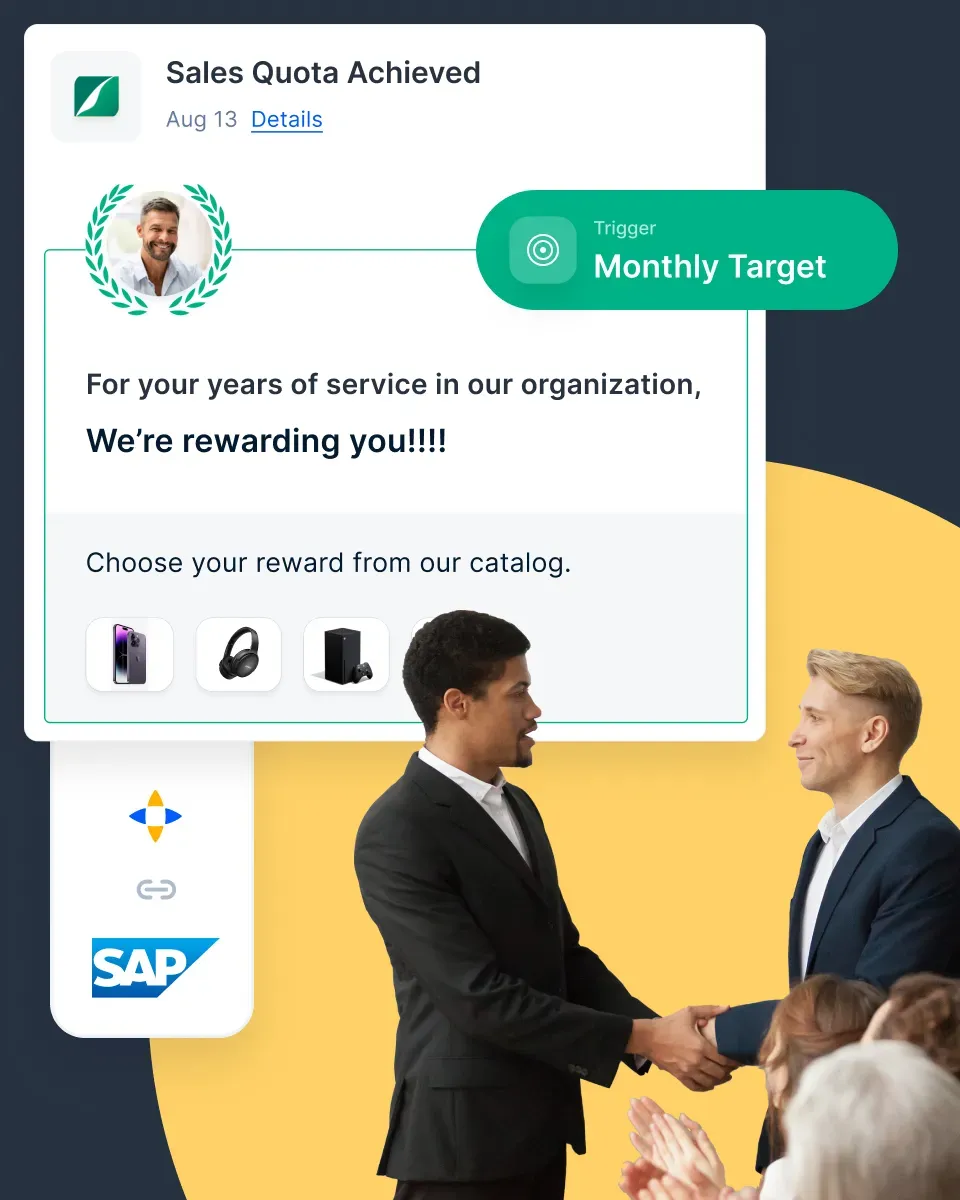11 Latest Employee Retention Trends: What’s Keeping Employees Around in 2025?
Discover the latest employee retention trends for 2025, from flexible work models to AI-driven engagement, and learn how companies keep top talent committed.
On this page
Gone are the days when a steady paycheck and an annual bonus were enough to keep employees loyal. Today’s workforce expects more than just financial rewards—they want flexibility, career growth, recognition, and a workplace that truly values their contributions. Companies that fail to meet these expectations risk high turnover, disengaged teams, and increased hiring costs.
With talent shortages and shifting workplace dynamics, businesses are rethinking their approach to employee retention. Organizations now focus on employee experience, well-being, and purpose-driven work cultures rather than just traditional perks.
From four-day workweeks and AI-powered engagement tools to personalized benefits and stronger DEI initiatives, companies are making bold moves to keep employees motivated and committed long-term.
So, what’s working, and what’s outdated? Let’s explore the latest employee retention trends shaping workplaces in 2025.
11 Latest employee retention trends in 2025
Employee retention trends predict the future of work—the anticipated patterns influencing how employers can maintain their workforce, enhance loyalty, and increase competitiveness.
1. Learning and development opportunities
A workplace survey says that more learning opportunities can cause 94% of employees to stay longer at a company.
Want to leverage this learning and development (L&D) trend? Begin by focusing on one of the most crucial hiring steps: the onboarding process. It’s proven to encourage employee longevity (for up to three years!).
Create a continuous learning environment by offering digital learning platforms, cross-training, and mentorship programs. Should you want a more exciting, fun approach, you can organize free development workshops or pay for their out-of-town industry conferences.
These simple functions can empower employees in their career paths, making them more recognized and rewarded. A company with streamlined L&D can retain a more motivated, highly skilled workforce.
2. Assisting employees with well-being
With work-related stress affecting 80% of the workforce, it’s about time all companies start to recognize the overall well-being of their employees. The Chartered Institute of Personnel and Development outlines these crucial areas:
- Health: This isn't just about physical health. Mental health is equally vital. Initiatives and regulations that recognize mental health issues can make a significant difference.
- Good work: Setting an appropriate reward system—which we have a detailed guide for—goes a long way here. Good line management and a suitable physical working environment create an environment where productivity thrives.
- Values: Upholding and promoting the company's values encourages employee alignment and engagement.
- Social needs: Giving employees a voice and fostering positive relationships within the team to improve overall job satisfaction is essential.
- Personal growth: Implementing a continuous improvement plan lowers the chances of employee turnover over short periods.
- Lifestyle: Diet and physical activity programs can be the core of this factor. Some example efforts include recipe clubs, healthier choices in the cafeteria, and other exercise-related organizations.
- Financial well-being: Offering competitive compensation and guidance on personal finance management enhances financial security.
Addressing these areas of concern can be quite a big feat for any company. But you can start small, aiming first for mental health initiatives, an established reward system, and combining inclusiveness with workplace diversity.
3. Remote and hybrid work need to be the central focus
Many studies confirm the correlation between hybrid work setups and better work-life balance among employees - a combination that HR leaders believe to be a key driver in retention.
More and more people are aware of and prefer remote and flexible setups, and companies must follow this trend. Such work arrangements may have setbacks, including:
- Communication breakdowns
- Decreased team engagement
- Difficulty tracking employee productivity
- Managing different time zones
However, you can overcome the challenges of flexible and remote setups by building a policy that clearly defines where and when employees work. And, of course, leverage the use of technology.
In the US, 74% of companies have already adopted this work model, with approximately 59% of employees preferring to work in such companies, according to Zippia.
See our guide for remote work to learn in detail the techniques and tools you can use to foster better hybrid arrangements.
4. AI-powered employee engagement
Artificial intelligence is transforming how businesses interact with employees. AI-driven platforms provide personalized learning experiences, automate repetitive HR tasks, and analyze employee sentiment in real time. By leveraging AI, companies can identify disengagement early and implement targeted retention strategies, making employees feel more valued and heard.
With real-time feedback loops and intelligent engagement analytics, platforms like Empuls help businesses build a thriving, motivated workforce while reducing attrition.
5. A skills-based approach to hiring
While many trends will change over time, one remains effective.
Many businesses are shifting from traditional hiring methods focused on degrees and past experiences to a more skills-based approach. In turn, this can also increase diversity within their teams.
Shift your focus to assessing specific abilities and potential during the hiring process; training can fill any gaps later. This approach can lead to a highly skilled workforce, and your new employees will feel more valued and appreciated for their unique abilities and contributions.
You can even apply your skills-based approach to the existing workforce. In that case, you can further refine data-driven employee retention strategies and identify who requires upskilling or reskilling. It gives you a more proactive technique to drive employee satisfaction, professional growth, and retention.
In turn, according to TestGorilla, 92.5% of companies that use this approach to hiring have reduced the rates at which they hire the wrong candidates.
6. Personalized rewards and recognition programs
A customized approach to rewards and recognition significantly boosts employee engagement. 72% of employees who experience outstanding recognition say their organization commonly acknowledges "little things."
These individuals are 20 times more likely to be engaged than those who receive low-quality recognition.
Therefore, avoid a one-size-fits-all approach. Recognition needs to be tailored based on individual, generation, and industry, ensuring people are rewarded and acknowledged effectively for their unique contributions and roles.
7. Diversity, equity, and inclusion (DEI)
A majority of U.S. workers acknowledge the benefits of emphasizing DEI. Yet, a Pew Research study reveals prevalent biases, with many believing that being a man or White offers job advantages.
Counteracting these ingrained beliefs requires a comprehensive DEI approach that promotes fairness, acknowledges diverse strengths, and actively counters gender and racial biases to foster a fair and inclusive work environment.
8. Flexible benefits and perks package
There may be limited current data regarding the number of employees prioritizing benefits over salary, but there's clarity on what perks employees value most. Here are the top three and the corresponding population prioritizing them:
- Healthcare benefits (89%)
- Retirement plans that guarantee financial security (81%)
- Time-off privileges, promoting work-life balance (81%)
9. Revolution of AI to enhance the employee experience
AI is projected to revolutionize the US labor market, with anticipated boosts in overall productivity growth by 1.5% in the next decade.
Simultaneously, the marketplace for AI technology is on an upward trend, expected to hit a staggering value of a trillion dollars by 2028. It is already transforming workplaces in several ways:
- Automation of repetitive tasks: This technology can streamline routine tasks and free up time for more complex duties.
- Employee training and development: AI-powered learning systems can tailor training to individual needs, thus improving employee skills acquisition.
- Talent acquisition: AI can speed recruitment by screening resumes and predicting candidate success.
- Employee engagement: Chatbots respond immediately to inquiries, enhancing satisfaction and engagement.
10. Four-day workweek trials
The traditional five-day workweek is re-evaluated as more companies experiment with four-day workweeks without reducing pay. Research shows that a shorter workweek enhances productivity, reduces burnout, and improves job satisfaction.
Companies that adopt this model find that employees are more engaged, less stressed, and more likely to stay long-term. While not all industries can implement this fully, flexible scheduling and compressed workweeks are increasingly popular retention strategies.
11. Boomerang employees
Rehiring former employees—often called boomerang employees—is becoming a bright retention trend. Many professionals leave a company only to return later when they recognize its growth potential, culture, or improved benefits.
Organizations that maintain positive relationships with departing employees through alumni networks or open-door policies have a higher chance of welcoming back experienced talent. This reduces hiring costs and onboarding time, benefiting both the company and the returning employee.
Driving employee retention with meaningful engagement

Employee retention is not just about competitive salaries but about creating a workplace where employees feel valued, connected, and motivated to stay. Organizations must focus on recognition, rewards, and engagement with shifting employee retention trends to build long-term commitment.
This is where Empuls makes a difference. As an all-in-one employee engagement platform, Empuls helps businesses foster a culture of appreciation, motivation, and collaboration, ensuring employees stay engaged and committed.
✅ Seamless rewards and recognition: Celebrate contributions, milestones, and achievements with personalized rewards that motivate employees.
✅ Data-driven employee feedback: Use real-time surveys and sentiment analysis to understand workplace engagement and take proactive retention measures.
✅ Stronger team connections: Enhance workplace relationships with a social intranet, where employees can collaborate, celebrate, and engage effortlessly.
✅ Wellness and financial benefits: Offer tailored benefits like tax-free fringe benefits, wellness programs, and exclusive discounts to improve employee satisfaction.
✅ Continuous engagement and motivation: Automate appreciation, recognize employees consistently and create a positive work culture that drives long-term retention.
Retaining top talent requires more than just perks—it demands a work environment where employees feel heard, appreciated, and motivated. Empuls equips businesses with the tools to build a workplace where employees choose to stay, contribute, and thrive.
Final thoughts
Employee retention isn’t just about keeping people on the payroll—it’s about creating an environment where employees want to stay. The latest trends show a clear shift towards flexibility, career growth, well-being, and meaningful work. Companies prioritizing these elements will build a more engaged, loyal, and high-performing workforce.
Ignoring these changes, on the other hand, could lead to higher turnover, disengaged teams, and talent shortages. Businesses that listen to employees, adapt to evolving expectations, and invest in workplace culture will be the ones that thrive in 2025 and beyond.
Retention isn’t a one-time effort—it’s an ongoing strategy. The question is, is your organization ready to evolve?


















